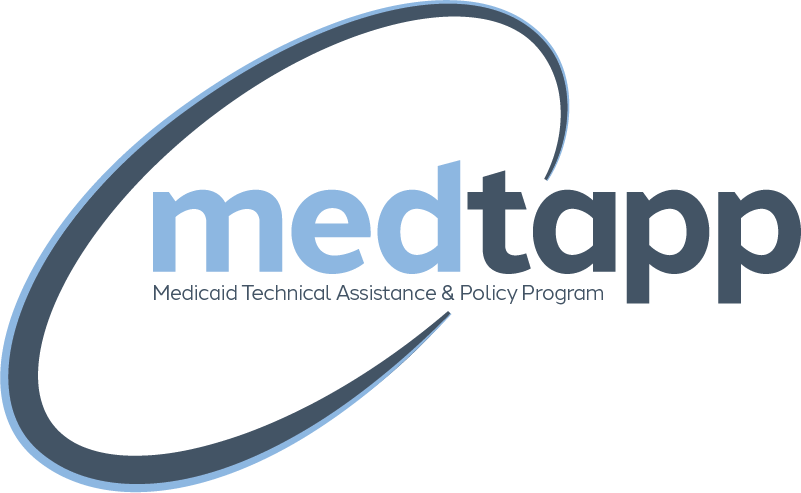The 5A's method of brief intervention has substantial research support for its utility in helping tobacco users across a variety of settings and can be incorporated with motivational strategies in a step-by-step process. However, there are multiple behavioral health interventions that can be used with caregivers, depending upon where they are in the quit process.
Health care providers and programmatic staff have several tools available to them, such as the 5As, 5Rs, and Motivational Interviewing. These can be used to offer encouragement and assistance to caregivers to modify their behavior.
For more information on using behavioral health interventions for tobacco cessation and to access additional resources, Providers are encouraged to download the Change Package.

 Providers using the 5 A’s counseling intervention will progress through a series of 5 topics with caregivers: Ask, Advise, Assess, Assist, and Arrange. This intervention is designed to be brief, 5 minutes or less, and is encouraged to be used by any trained health care professional working with tobacco users.
Providers using the 5 A’s counseling intervention will progress through a series of 5 topics with caregivers: Ask, Advise, Assess, Assist, and Arrange. This intervention is designed to be brief, 5 minutes or less, and is encouraged to be used by any trained health care professional working with tobacco users.It is important to ask every caregiver if they use tobacco, provide advice to quit, assess their willingness to make a quit attempt, and provide resources to aid in the quit process. This method is not meant to be forced and progression through the 5As should be contingent upon where the caregiver is in the quit process. For more information about using the 5As with your caregiver, see below or refer to the Change Package.
Ask: Ask every caregiver about their current and past tobacco use and if they or their family is exposed to secondhand smoke. Help the caregiver quantify their tobacco usage by documenting the number of cigarettes the caregiver smokes on a daily basis. Continue to the Advice stage if the caregiver is a current or former smoker or if the caregiver or their children are exposed to secondhand smoke.
Advise: For current smokers and families exposed to secondhand smoke, provide advice on at least one Advise topic. Provide the caregiver with the Willing to Quit, Recently Quit, or Not Ready to Quit resources.
Advise Topics
1. Strong advice to quit
In a clear, strong, and personalized manner, urge the caregiver to quit smoking. 2. Benefits of quitting
Provide the caregiver with information on the benefits of quitting, including improved health, money savings, easier breathing, and a longer life expectancy. 3. Harms of smoking
Provide the caregiver with information on the harms of smoking including increased risk for heart disease, cancer, and stroke. 4. Difficulty of quitting
Discuss the difficulties of quitting smoking with the caregiver. Brainstorm ways to combat mood changes, cravings, weight gain, and being around other smokers. 5. Risks of second hand smoke exposure
Provide the caregiver with information on the harms of secondhand smoke, including health risks for adults, children, and unborn babies.
Continue to the Assess stage if the caregiver is a current or former smoker.
Assess: Assess all current and former smokers for their Stage of Change. For caregivers who are willing to quit, set a quit date with them. Provide the Former Smoker, Recently Quit, or Willing to Quit resources to the client, according to their stage of change.
Continue to the Assist and Arrange stages for caregivers who are in the Contemplation, Preparation, or Action Stage. If the caregiver is in the Maintenance stage but expresses a desire to begin smoking again, continue to the Assist and Arrange stages.
Assist: For caregivers who are willing to quit, provide assistance in at least one Assist area.
Assist Areas
1. Follow-up from last visit
Ask the caregiver about their progress on quitting since their last visit. Arrange for a follow-up call or appointment to check in with the caregiver about their quit process. Identify potential triggers and review problem-solving skills for those triggers. 2. Review problem-solving skills
Review problem-solving skills with the caregiver like exercising, deep breathing, drinking water, and walking away from smokers when they feel like smoking. 3. Provide self-help materials
According to the caregiver’s Stage of Change, provide them with one of the Consumer Resources. or other self-help material. 4. Provide social support
Affirm the caregiver’s decision to quit smoking. Tell the client that about half of all of the people who ever smoked have now quit. Communicate your belief in their ability to quit. Invite the caregiver to talk about their success. 5. Identify local social support
Identify friends and family the caregiver can use for social support, including people who will encourage the caregiver to quit, help them in the quit process, or be a “quit buddy” with them.
Arrange: For caregiver who are willing to quit, provide a referral to the Quit Line at 1-800-784-8669, or another tobacco cessation program. Schedule a follow-up appointment or phone call with the caregiver .
Providers are encouraged to download the Change Package for a detailed description of how to progress through the 5 A’s with caregiver in all levels of the quit process.




 Motivational Interviewing (MI) is a caregiver-centered method for enhancing motivation for change by exploring and resolving feelings about quitting tobacco use. MI is designed to help caregivers identify and address their barriers to the quit process and move through the stages of change. The method of counseling is caregiver-driven and should be approached as a collaborative versus prescriptive treatment. Trained healthcare or behavioral health specialists employing this methodology should adhere to the following steps:
Motivational Interviewing (MI) is a caregiver-centered method for enhancing motivation for change by exploring and resolving feelings about quitting tobacco use. MI is designed to help caregivers identify and address their barriers to the quit process and move through the stages of change. The method of counseling is caregiver-driven and should be approached as a collaborative versus prescriptive treatment. Trained healthcare or behavioral health specialists employing this methodology should adhere to the following steps:




